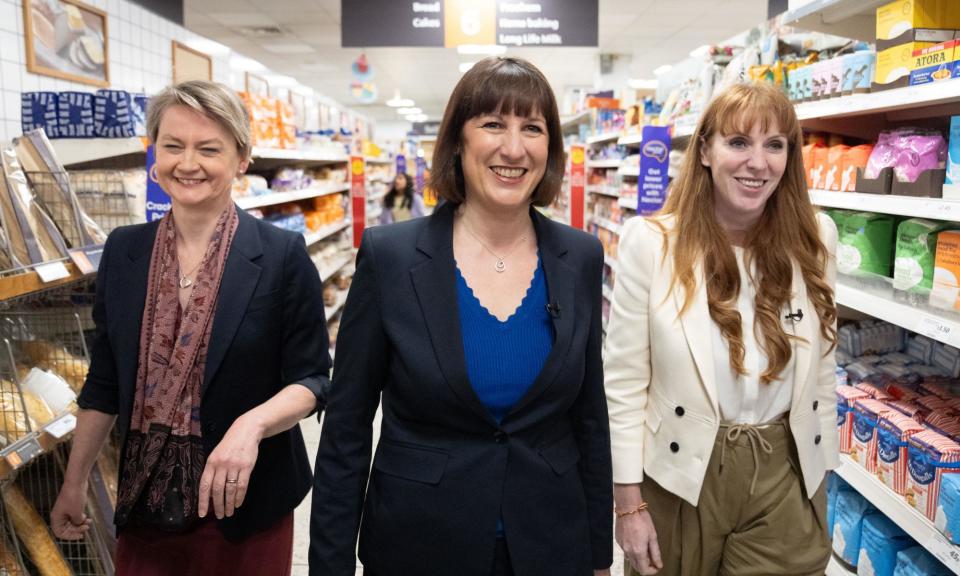Waitrose only major supermarket with majority Tory customers, polls show

The election may not yet be in the bag for Labour, but research suggests it is in the shopping basket.
The party’s voters now make up the majority of customers at all leading supermarkets apart from Waitrose, according to the latest polling from retail research firm GlobalData.
Shoppers at Tesco, Sainsbury’s, Morrisons, Lidl and Aldi have all swung to Labour from Conservative since 2019, the research found, with the upmarket online grocer Ocado narrowly taking the lead with the biggest proportion of Labour supporters, followed by the discounters Lidl and Iceland.
Five years ago, Labour held a majority only in the aisles of Asda, Co-op and Iceland.
Even at Conservative holdout Waitrose, the Tory lead has been heavily discounted to just 1.2 percentage points, down from 36.4 in 2019. That’s bad news for Rishi Sunak given that “Waitrose woman” – middle class, southern and not a fan of Brexit or culture wars – was one of the voter demographics identified by the Conservatives in 2022 as one they needed to win over to stay in No 10.
Shoppers at Iceland, which has the biggest proportion of customers on the lowest income, have swung further to the left. Even the supermarket’s boss, Richard Walker, has switched allegiance to Keir Starmer’s party after ditching plans to become a Conservative MP.
Zoë Mills, lead retail analyst at GlobalData, said: “If supermarkets were seats, Labour would be on course for a landslide victory, according to our supermarket election poll.
“When we asked the same questions during the 2019 general election campaign, the Conservatives held sway in all supermarkets except Asda, Iceland and the Co-op, having enticed Morrisons’ shoppers to vote blue and holding on to both Aldi and Lidl, which had previously been Labour in our pre-2017 election polls.”
Mills said that, aside from their lead at Waitrose, the only chains where the Conservatives were not trailing Labour by double-digit percentage points were Marks & Spencer and the Co-op.
Perhaps surprisingly, the supermarket with the highest proportion of Reform UK voters is the Co-op, despite its long socialist heritage and funding of the Co-operative party, which backs 26 Labour MPs.
Mills suggested the Co-op’s large number of stores in south and south-east England, where Reform supporters tend to live, could explain why so many of its shoppers favour the party backed by Nigel Farage and led by Richard Tice, who is understood to be a Tesco shopper.
Aldi was found to have the biggest share of Green party supporters, followed by M&S.
Mills said: “Reform, formerly known as the Brexit party, has overtaken the Liberal Democrats and is third favourite in all supermarkets except Sainsbury’s. The Green party is still in fifth place across most locations, but has made some progress, especially in the larger supermarkets.”
GlobalData compiled the research by asking a group of 3,177 nationally representative consumers between 1 April and 12 May how they intended to vote in the next general election and which retailer they mainly used for food and groceries.

 Yahoo Finance
Yahoo Finance 